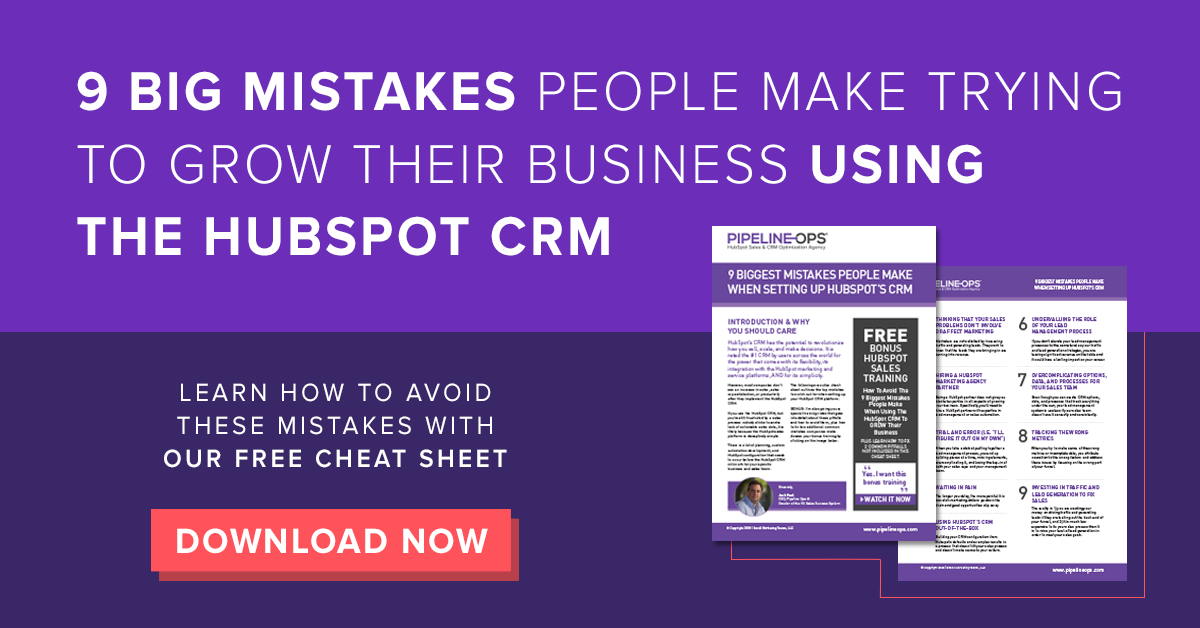HubSpot is an incredibly powerful tool for businesses of all shapes and sizes. Its sales and marketing workflow automation can help your team contact the right prospects at the right time, without burdening your reps with additional CRM admin tasks.
However, as a manager or c-suite executive, you probably don't have the time to learn HubSpot inside and out.
Your job is to find HubSpot experts, whether they be employees, contractors, or consultants, to overlay your unique business processes onto HubSpot’s platform. Not just that, but you need confidence that your HubSpot settings are optimized to reduce friction in your processes, maximize revenue growth, and promote scalability.
The question then becomes - how do you know if you’re hiring the right person/team to help you with HubSpot, if you’re not a HubSpot expert yourself?

What Is the HubSpot Rule of Seven?
The answer to the question above lies within the “HubSpot Rule of Seven.” This rule says that for everything you want to do in HubSpot, there are SEVEN ways to do it.
This means that for every campaign you map, HubSpot workflow you design, or process you implement, you need to think through all seven options to reach the most long-term and scalable solution for your business.
It’s critical that you keep the HubSpot Rule of Seven in mind when you’re evaluating new hires, consultants, or contractors tasked with setting up and/or optimizing your HubSpot settings.
If they insist there are only 1, 2, or 3 (etc.) ways of setting up specific automation for your business, you can be sure they have only a basic knowledge of HubSpot, and therefore, are not going to be able to take your company where it needs to go.
Putting the HubSpot Rule of Seven Into Action
I began talking about the HubSpot Rule of Seven several years ago and these days, it is part of the standard vernacular at my firm and among our clients.
For every hour we spend in a workshop with a client, my team spends 3-4 hours in front of a whiteboard iterating and debating the best way to set up our client for success in HubSpot - even if we have built much of the automation in the past for other organizations.

For example, let’s say you need to set up an automated lead routing rule set in HubSpot. A person with a basic knowledge of HubSpot will create a simple workflow that routes leads entering your system to sales reps, who then take specified actions upon those leads.
However, what if a lead is entering your system for the second time and is already assigned to someone?
- Will this lead go to the right person?
- Will this lead change your reporting functionality?
- Will it add extra steps to your rep’s process and slow down your team’s efficiency?
- Does your system account for all these variables?
As you can see, there is a lot to think about when setting up your HubSpot workflows.

Our team’s solution sessions are the only way to ensure each and every setting is optimized. Working through each of the seven scenarios allows us to find the best solution that maximizes efficiency and results for your unique business.
The Downside of the HubSpot Rule of Seven
There is also a dark side to the HubSpot Rule of Seven.
If you hire people, put people in charge of HubSpot, or bring on partners who only know a few ways to implement specific HubSpot automation or business processes in HubSpot, you are at risk of implementing things that will hurt productivity, conflict with existing automation, slow outcomes, and have to be re-built before long.
HubSpot Rule of Seven Example
Let’s look at a simple example. We recently helped a company who promoted their products and services at trade shows. Every time they got a lead list from an event, their mid-career HubSpot administrator would create a new checkbox property for that specific event.
When they imported the contact list, they would check that checkbox. After several years, the segmentation approach still worked, but it cluttered up their HubSpot properties by adding 20 new properties each year that were only used a handful of times to report on and follow up with people from that conference.
If their marketing team had followed the HubSpot Rule of Seven, their team would have decided to use HubSpot built-in import segmentation to create cleaner lists inside HubSpot and avoid adding unnecessary steps and properties to their HubSpot system.
HubSpot Admin Takeaway
As a manager or executive, you have a lot on your plate. Learning the ins and outs of a software package as complex as HubSpot probably isn’t going to be checked off your to-do list anytime soon.
Instead, focus on finding the right people to help you with HubSpot and know the HubSpot Rule of Seven. Integrate it into your revenue operation processes. Hire people who live by it. "Future you" will thank you.


